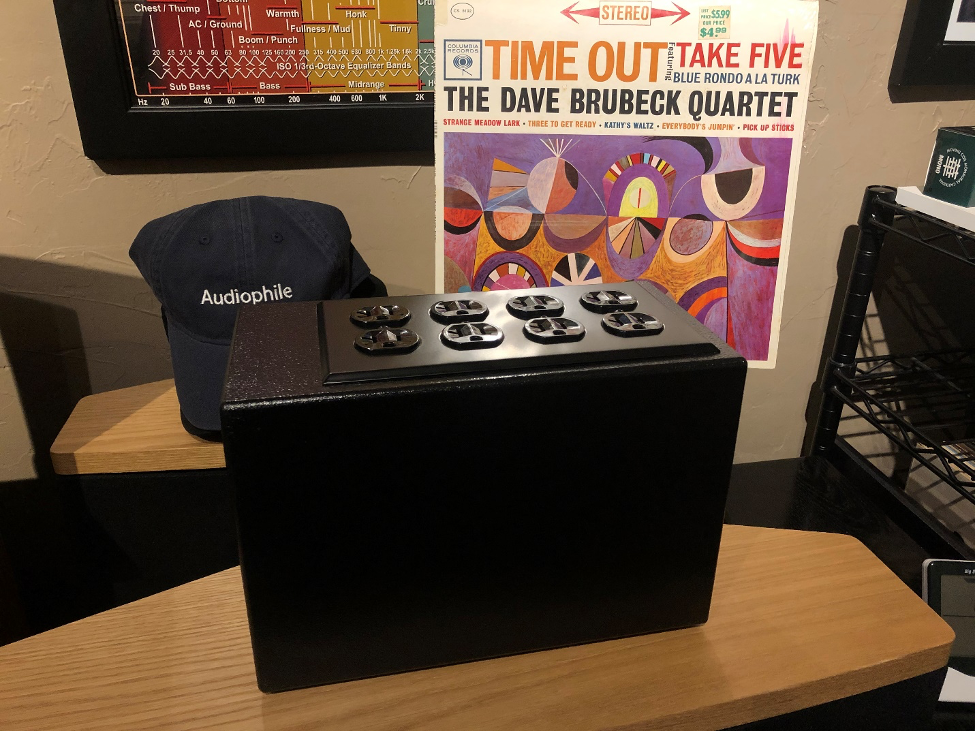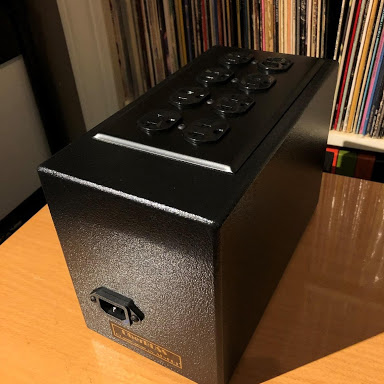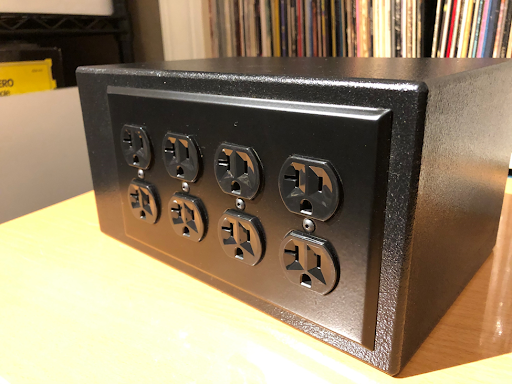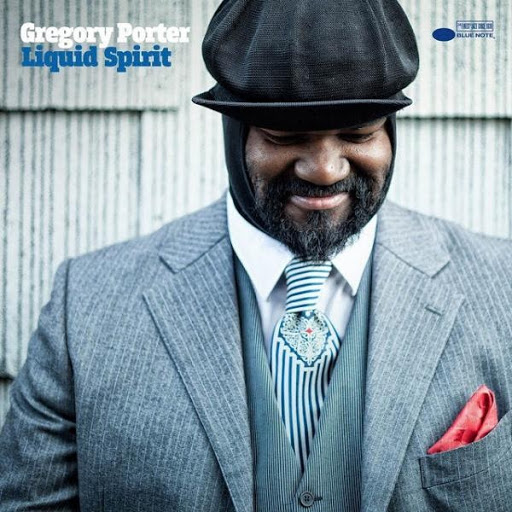
One of the things that give me great joy as a reviewer is to shine a light on some of the many excellent
audio products that swim under the surface of the audio industry. While not a “well-known brand” P.I.
audio group, LLC has been around for quite some time and their UberBUSS Power Conditioner is a product that deserves more attention.
Dave Elledge, the owner of P.I. audio group began his pursuit of sound quality in the late ‘70s when he first worked as a recording engineer at The Sound Studio in Albuquerque. He went on to design several recording studios in the ‘80s and ‘90s, including the gold record-producing Santa Fe Center Studio owned by Doug Geist. In the mid-’90s, he went to work for Philips Semiconductor as a line technician. This is where he got his education in cryogenic treatment, material purity, and power management in semiconductor production. After his stint at Phillips ended in 2001, he returned to the recording studio.
Pursuing Sound Quality
I’ll let him pick up the story at that point, which is where necessity and invention intersect… “I was called upon to do some contract work in a studio that was having power issues. They had a huge public utility-installed isolation transformer that supplied only the recording studio, but they were still being affected by some refrigeration compressors in a business a quarter of a mile away causing audible pops, clicks, voltage sags, and current depletion. I studied the problem and quickly determined that isolation transformers are an incredibly compromised piece of gear.
They ‘may’ eliminate a lot of the line trash and hash, but [they] severely limit instantaneous current throughput. Using some of the industry-standard commercial “fixes” just didn’t fix anything. We quickly learned that removing some of the local “power filters” made by several well-known names greatly improved SQ as long as there was adequate incoming current to supply the needs of the gear. Then and there was when I became obsessed with correcting the wrongs that were done by well-known “power filters” and the like. It took me months of research, experimentation, listening tests, and group sessions to come up with my first really effective power filter, the MajikBUSS.”
Behind the Design
Well-known in the DIY community, Dave came to my attention due to his association with Pete Grzybowski, a cable designer at Triode Wire Labs. I reviewed the Triode product line last year, and I was quite impressed with it (click to read Part 1 and Part 2 of my Triode reviews). I noticed that Dave collaborated with Pete on the development of Triode Wire Labs’ excellent USB cables. With a bit of research, I found the P.I. audio group’s website and learned about his power conditioner, the UberBUSS.
A Study in Synergy
I contacted Dave and asked him to provide a short description of the design of the UberBUSS. Here’s his reply:
“The UberBUSS is a study in synergy. Each section depends upon the others to get the performance to where it is today. There are essentially three sections in addition to the I/Os. There is the initial section that I call the Brick. It is a non-inductive massive EMI/RFI filter that does the majority of the heavy lifting in the performance aspect of the Uber. Next is the Power Factor Correction network. This increases the efficiency of inductive loads attached to the Uber. It provides a Power Factor of 1 under most circumstances. Power factor is directly related to the efficiency of power conversion and utilization in components. The last section is what I call FinalFilters. These are high-frequency filters not unlike those seen in other power filters. The difference is that these are much broader bandwidth than what is normally used (typically a .47ufd capacitor).
Internal Wiring
One of the biggest differences in the UberBUSS is the internal wiring. I have it made for me and have to buy it in large quantities to get the cost down. The copper used is UNS C10100, electronic oxygen-free copper. It is produced here in the US. The UberBUSS is capable of 40A internal throughput without any strain on the components. In other words, the current handling is limited only by the input and output connectors.”
Configuring the UberBUSS

The standard UberBUSS enclosure has a textured black finish. It eschews external bling to devote your hard-earned dollars to internal quality. However, talk with Dave if you need a custom finish. Upgraded faceplates and enclosures are available. Per Dave, all of the enclosures are made of non-metallic materials to prevent eddy currents.
The UberBUSS can be configured with just one outlet or up to six duplex receptacles. Dave will discuss your needs with you before he makes your unit. He will configure your UberBUSS based on your conversation. The standard receptacle he uses is the Pass & Seymour 5362A Heavy Duty Extra Hard Use 20A. Dave chose this after an extensive evaluation of virtually all of the commercially available outlets.
About Receptacles
“During the Uber saga I have tried every receptacle I could find for use,” Dave said. “Early on I used the P&S 5362 Spec Grade, the standard one with the .031” contacts and a different brass alloy. It was better than the others that I tried. Music had more “flow”. I kept trying receptacles from Leviton, Hubbell, Eagle, Cooper, etc. I tried 8200, 8300, everything.
The P&S 5362A stood out as a better and (important to me) more consistent performer. I settled on it as standard fare about two and a half years ago. I started modifying them last year by removing the assembly pins and replacing them with brass screws to make an all brass/no steel receptacle. The high copper .036 contacts grip like a pit bull. I remembered back to seeing electron microscope pictures of identical alloy unpolished vs. polished contacts. Unpolished, it looked like a miniature lightning storm (RFI generating) and polished more of a purple glow indicative of ion migration. Polishing is a no-brainer and is great for all applications.”
UberPuerto Receptacle
Dave offers his UberPuerto receptacle as an upgrade. It starts with the same P&S 5362A outlet. He hand-polishes it, applies his proprietary RFI mitigation compound internally, and treats the contacts with graphene. The last step is a cryogenic treatment.
For those of you who want a UberPuerto for your wall outlet or another DIY project, Dave makes them available separately for $80.00. On the other hand, if you have a favorite receptacle you want to use, he can also accommodate that. Dave configured my review unit with four UberPuerto duplex receptacles and the Furutech FI-06 NCF IEC inlet. If you prefer, you can have a 20 amp outlet or a Neutrik powerCON connector installed.
Before we move on, there’s one final point. The UberBUSS offers no surge protection. Dave tells me that he has yet to come up with a solution that does not negatively impact the sound.
Quality of Silence
In my quest for a lower noise floor, I have come to believe that in audio the QUALITY of silence is as important to the musical presentation as the music itself. After all, the music springs from a background of silence. As the music ebbs and flows, it always returns to that background. This silence, at the very least, must not distract from the music. At best, it provides the proper background that enables the expressive quality of the music to touch the listener.
I have had numerous power conditioners pass through my audio room over the past 20 years. They were the usual lineup of well-known brands. Some seemed to take the sledgehammer approach and, while reducing the noise floor, they also reduced the pace, rhythm, and timing of the music. Others seemed to impact the music nonlinearly by affecting one area more or less than another area. Still, others seem to inject their “personality” into the system and color the music much like a computer monitor when the color is not adjusted correctly. As a result, these power conditioners made my system sound similar on all types of music.
DO NO HARM
Ultimately, I found myself returning to my trusty Richard Gray “hot box” plugged directly into the wall. It wasn’t better in all areas but it follows my cardinal rule in audio, which is DO NO HARM. It is nothing fancy. It’s just a box with multiple star-grounded outlets that are wired in parallel. That’s it, nothing else!
No, it does not lower the noise floor, but neither does it color the sound or restrict the dynamic expression of the music. I am not willing to trade dynamic expression for a lower noise floor. When I do, I may hear more details, but there is a good chance my foot will stop tapping.
And what about power regeneration vs. power conditioning? I have a PS Audio P20 regenerator on the way, and I intend to address that question. I’ll report back to you in a review later this year. Suffice it to say that I find power delivery is a fascinating part of this hobby. With that backdrop, let’s move on to the “sound” of the UberBUSS.
The UberBUSS in My System

Dave had warned me that the UberBUSS would sound somewhat “broken” for the first 24 hours that I played it. He said the upper mids would sound like they were pushed forward, it would be light on the bass, and the soundstage would be flat. True to form, this is what I experienced. After the first 100 hours, the sound was 98% “there”, and the full break-in at about 200 hours was the point where subtle microdynamics became fully revealed and the sound “opened up.”
BTW, he did offer a clever break-in procedure to speed things up. He told me to plug my refrigerator into it. The varying load is perfect for break-in, and he said the UberBUSS should be good to go in 3 to 4 days. Ok, before you ask. No, I did not notice clearer ice in the icemaker.
After a few days, the sound stabilized and became consistent. I sat down to listen to a few albums to hear the effect the UberBUSS would have on my system.
Nnenna Freelon Live

This Nnenna Freelon album is a well-recorded live performance that I use for soundstage size, crowd interaction, applause, and of course, a great voice. Compared to the Audioquest Niagara 5000 I had in the system previously, I immediately noticed that the soundstage seemed wider and the instruments sounded unencumbered and had very natural dynamics. These improvements were not subtle.
Applause also sounded very natural. The leading transient edge of the hand clap was crisp and not blurred. I could easily distinguish whether the hands were open or cupped. After the second track, I “settled into” the venue where the music was recorded.
I also noticed a small but definite increase in volume with the UberBUSS in the system. The music felt as if a governor had been removed from the dynamics. The acoustic bass presentation tightened and was more focused. It sounded faster and cleaner. The lower noise floor gave the instruments a sense of space around them, and they became more dimensional. Instruments that many other power conditioners dynamically bury easily express themselves and became important parts of my listening experience. They were less homogenized, and the overall presentation had a more 3-D quality.
Gregory Porter’s Liquid Spirit

With the UberBUSS in the system, Gregory Porter’s voice was more nuanced. The UberBUSS brought out the subtle and vocal inflections previously buried in the noise floor. Hearing him through the UberBUSS was like hearing him for the first time. I had not previously realized the complexity of his voice.
The effect of the UberBUSS reminded me of the impact I wrote about in my DS Audio E1 Optical cartridge review last year. Like the DS Audio, the UberBUSS seems to remove a “film” from the music that I didn’t realize was there until it was stripped away. I have heard other power conditioners reveal these details, but it was always at the cost of restricting the dynamics or adding some coloration. That’s not a price I am willing to pay!
The Marsalis Family, A Jazz Celebration

By now you know that if you are reading one of my reviews, you are going to get a reference to a New Orleans music selection. This special recording, along with the 2009 Kennedy Center concert, captures two of the few times Papa Ellis Marsalis and his four sons performed together on stage. This album was recorded in 2001 at the UNO Lakefront Arena, a venue where I have heard many excellent concerts.
“Struttin’ with Some Barbecue” is a cut that lets the UberBUSS “do its thing.” It showcased the wide, dynamic structure of the music. From the instrumental solos to the complexity of everyone on stage playing together, the UberBUSS fully revealed the subtle dynamic expressiveness of each instrument. Wynton’s opening trumpet call immediately got my attention, and this recording was off to the races.
The drum solo is one stand-out area where, with the UberBUSS in the system, I FELT the dynamics of the drum set and even sensed the vibrations in the air and the resonance of the bass drum. The trombone work by Lucien Barbarin on “St. James Infirmary” is stunning. It sounded so subtle but so expressive. No other power conditioner that I have had in my system has connected me more to this performance than the UberBUSS.
Here is a youtube link to the 9-minute performance of “Struttin’ with Some Barbecue” for your enjoyment. Even with the audio compressed, the energy of the concert comes through. The CD is quite satisfying.
Will it be Magical in Your System?
I have been doing this far too long to succumb to the ranking of something as subjective and personal as the “audio experience”. Music touches each of us differently, and as we continue our growth in this hobby, we will continue to experience wonderful components. My role here is to relate to you that the P.I. audio group UberBUSS is a product worthy of your valuable time and efforts to evaluate. It deserves your consideration and has the potential to fundamentally improve your listening experience.
Will you like it? Will it be “magical” in your system? Quite possibly, but in a hobby where the outcome depends so much on system synergy, it would be presumptuous of me to answer those questions for you. I can tell you that it will educate you, and knowledge is power. You will come away from listening to the UberBUSS as a more intelligent listener. You may, like me, end up having it reside in your reference system. As it stands now, the UberBUSS is the best power conditioner I have heard in MY SYSTEM to this point, and it is not going anywhere.
No, I have not heard every power conditioner, but who has? It is, however, the first power conditioner I have heard that maintains (no, it actually increases) the “out of the wall” dynamics and yet lowers the noise floor ….all while remaining essentially tonally neutral. At its $1,195.00 price point, it easily competes with and IMHO beats power conditioners I have heard that cost many times more.
Earlier I wrote about the quality of silence that I feel is necessary for a component to have for me to be “touched” by its musical presentation. That interaction, the playful bantering, if you will, of silence with the music is oh so right with this component. You will know it when you hear it, or should I say when you don’t hear it.
Conclusion
The UberBUSS presents contrasts in the musical dynamics against a background that simply enhances and clarifies the artistic intention of the performer. For me, it moves beyond simplistic music reproduction to a new experience, communication of sorts with the performer. Minute details that are otherwise buried in the noise floor, spoke loudly through the UberBUSS. They commended me to pay attention to the artistic efforts the performer injects into the music to make it his or her own. It was an emotionally satisfying experience, and at the end of the performance, my foot stopped tapping. I took a deep breath, sighed, shook my head slowly from side to side, and relished the moment. I’ll bet you would have too. This was a moment we are all in pursuit of and the UberBUSS took me there! Highly recommended!
Pricing: $1,195.00 standard version with the Furutech FI-06 NCF IEC inlet and no power cord. The P.I. audio group offers a 30-day money-back guarantee and a lifetime warranty.
Price as reviewed: $1,515.00 (My review unit had four UberPuerto receptacles ($220 upgrade) and it was wired with Triode Labs wire (a $100.00 option).
Note: Dave warned me about an upcoming price increase due to the rising cost of materials. He recently received notice of a 23% increase in his cost for the P&S receptacles and cost increases for other materials are on the horizon in this post-Covid world. You have been warned.
Associated Equipment
ANALOG SOURCE:
AMG Viella 12JT Turbo turntable /tonearm & VIV Labs Rigid Float Tonearm
Benz Micro LP-S MR cartridge & DS Audio Master One cartridge,
HANA ML Mono MC Cartridge, Denon 103R
PHONOSTAGE:
DS Audio Master 1 phono EQ, PS Audio Stellar Phono, Parasound JC3+
DIGITAL SOURCES:
Aurender S-10 server/streamer
McCormack DAC-1 Platinum, McCormack SST-1 transport, Modified McCormack Signature CD Player
OPEN REEL:
Studer A 810 with Flux Magnetic Heads optically aligned by JFR Magnetics and direct-wired into a King/Cello tape preamp
LINE STAGE:
The Truth v.3 (passive)
Luminous Audio Axiom II Walker Mod (passive)
Vinnie Rossi L2SE
POWER AMPLIFIERS:
Pass Labs SIT 3
SMC Audio DNA-1 Platinum
PS Audio M1200 monoblocks
SPEAKERS:
Acoustic Zen Crescendo II
Pure Audio Project Treo 15 Classic
CABLES:
Acoustic Zen
Audience
Triode Wire Labs
ASI Liveline
Analysis Plus
A/C POWER:
Dedicated 20 amp lines
Audioquest Niagara 5000
P.I. Audio UberBUSS
Outlets from Audience, Jena Labs, P.I. Audio.
ACCESSORIES:
SMc Audio UFO Isolation Base,
Stillpoints Ultras, Apertures & LPI
VPI Bricks
Cardas Myrtle Blocks
DS Audio ION-001


ken, have you had the chance to compare the ps audio p20 with the uberbuss yet?
Hi Kevin,
The PS Audio P20 is was recently received and is scheduled to be rotated into my main system in a couple of weeks.
I would expect the review to be posted in late August-early September. Thanks for your interest.
I also have been on the power journey ? Not an easy one.
Have tried the P20 in my system. I got more from power cables than the P20.
Now that a year has passed has you tried the P20?